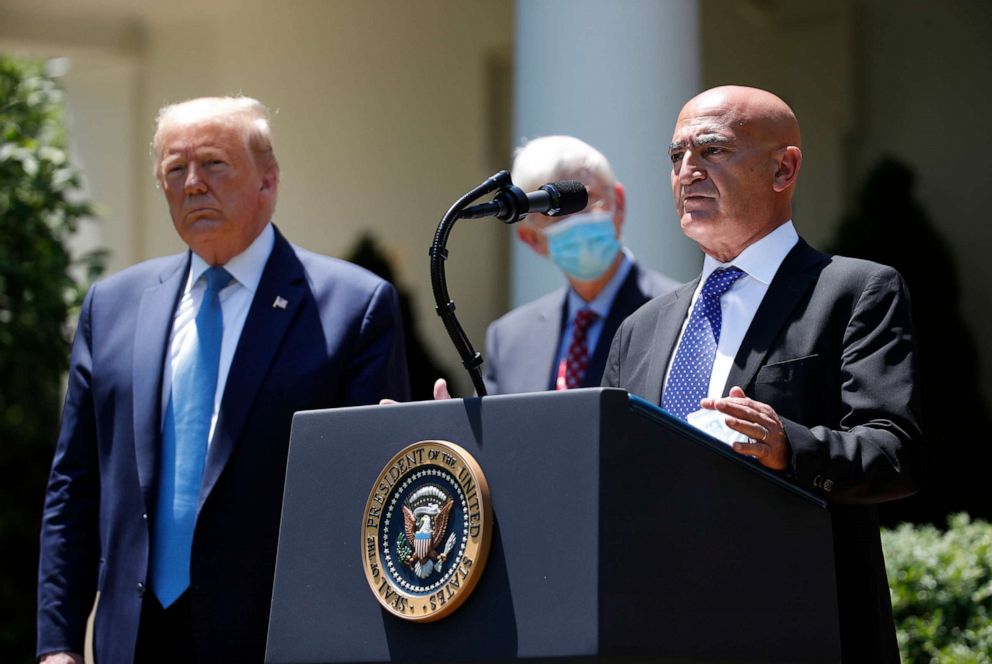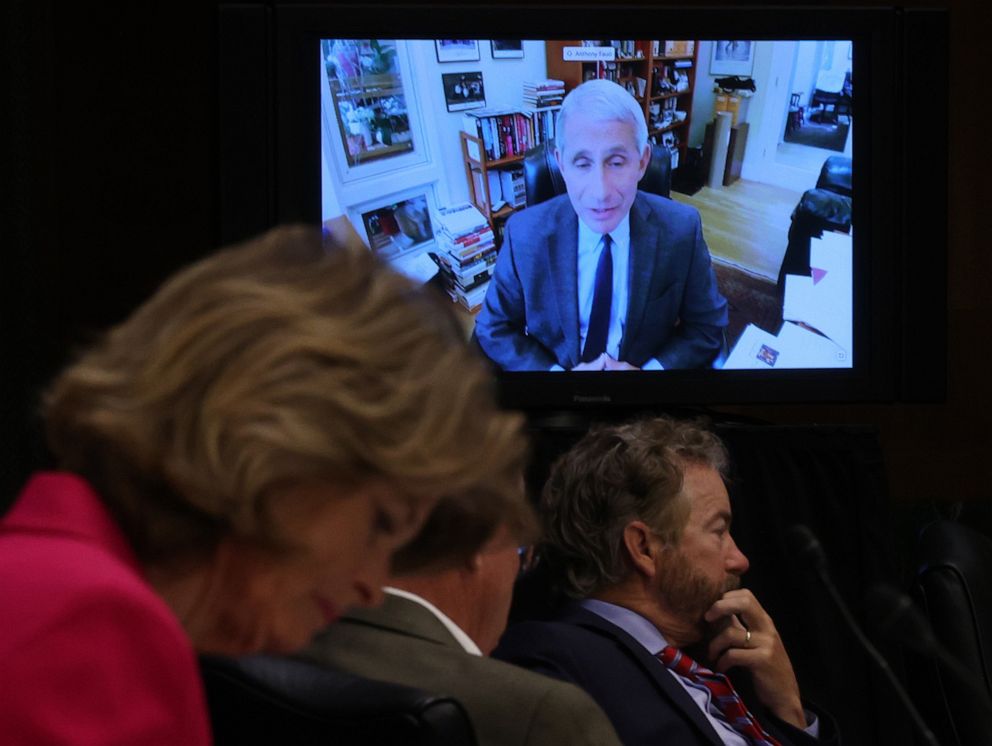A vaccine has never been developed so quickly.
By Sarah Kolinovsky ABC News
President Donald Trump is doubling down on his claim that Americans could see a vaccine for the novel coronavirus by the end of the year.
«Another essential pillar of our strategy to keep America open is the development of effective treatments and vaccines as quickly as possible. I want to see if we can do that very quickly,» Trump said Friday at an event to highlight his administration’s effort to expedite a vaccine, dubbed «Operation Warp Speed.» «When I say ‘quickly,’ we’re looking to get it by the end of the year if we can. Maybe before.»
But the Trump administration’s own medical and scientific experts leading the race to develop a vaccine routinely cast doubt on that timeline.
On Friday, the president tapped Moncef Slaoui, a former pharmaceutical executive, to lead Operation Warp Speed. Even he concedes the goal is formidable.
«Frankly, 12-18 months is already a very aggressive timeline,» Slaoui, the former CEO of GlaxoSmithKline, said in an interview with The New York Times. He said he was in agreement with Dr. Anthony Fauci, the director of the National Institute of Allergy and Infectious Disease, about the challenge that timeline poses.
Still, Slaoui, the former CEO of GlaxoSmithKline, did say mass producing a vaccine by January 2021 is a «credible objective.» Slaoui maintained he would not have agreed to head up the White House’s effort if he did not think Trump’s goals were attainable.

Since the beginning of the coronavirus crisis, Fauci has frequently cited the 12- to 18-month timeline. He delivered a reality check at a Senate hearing Tuesday when he said having a vaccine for the start of the next school year is not possible.
«Even at the top speed we’re going, we don’t see a vaccine playing in the ability of individuals to get back to school this term,» Fauci said.
But when Sen. Mitt Romney, R-Utah, pressed Fauci on the likelihood of developing a vaccine within in a year or two, Fauci was said it’s «not a long shot.»
«I think it’s clearly much more likely than not that somewhere within that time frame we will get a vaccine for this virus,» he said.
But Dr. Rick Bright, the former head of the Biomedical Advanced Research and Development Authority, emphasized to the House Energy and Commerce’s Subcommittee on Health Thursday that such a timeline would be unprecedented.
«Normally it takes up to 10 years to make a vaccine. We’ve done it faster in emergency situations, when we had starting material in the freezer for Ebola, but for a novel virus, this actually hasn’t been done yet that quickly,» Bright said. «A lot of optimism is swirling around a 12- to 18-month time frame. If everything goes perfectly — we have never seen everything go perfectly.
«I still think 12 to 18 months is an aggressive schedule, and I think it’s going to take longer than that to do so.»

On Friday, Defense Secretary Mark Esper echoed the president’s claims that the vaccine will be ready in record time.
«We will deliver by the end of this year a vaccine, at scale, to treat the American people and our partners abroad,» Esper vowed at the «Operation Warp Speed» event.
But the Pentagon’s chief spokesperson, Jonathan Hoffman, told reporters hours later that the timeline is more like a goal than a certainty.
«You set a goal, you have confidence that you’re going to put the resources to it to obtain that goal. And I think that’s what the secretary, that’s what the president, are saying is that we have a goal,» Hoffman said.
Currently there are more than 100 vaccines being studied, and at least eight of those have already progressed outside the laboratory and into human studies, according to the World Health Organization. The furthest along include candidates from the University of Oxford, Pfizer, Moderna Therapeutics, Inovio Pharmaceuticals and China’s CanSino Biologics.
Many of these vaccines use different technology — some new to vaccine science — and experts still don’t know which is the most likely to work.
Other experts interviewed by ABC News have agreed with Bright, saying that developing a vaccine within a 12-month time frame could mean throwing normal scientific standards out the window, but added that a vaccine could be available by the new year if everything goes perfectly.

«It is not impossible,» said Paul Duprex, Ph.D., director of the Center for Vaccine Research and professor of microbiology and molecular genetics at the University of Pittsburgh. «It’s of course very aggressive — but it is possible.»
«You’d have to be lucky,» said Dr. Paul Offit, co-inventor of the rotavirus vaccine, who sits on the Food and Drug Administration’s vaccine advisory committee. «It would be remarkable, but not completely ridiculous.»
Bright also warned Thursday of potential supply chain shortages for necessary materials like vials, needles and syringes, as well as the buffers and solutions used to make the vaccine.
Bright highlighted the importance of a plan to distribute the vaccine, given enough doses for every American will not be ready at once. Creating that plan is one of the goals of Operation Warp Speed.
«If you can imagine this scenario this fall or winter or maybe early next spring when vaccine becomes available; there is no one company that that can produce enough for our country and for the world,» Bright said. «It’s going to be limited supplies. We need to have a strategy and plan in place now to make sure we can not only fill that vaccine, make it, distribute it, but administer it in a fair and equitable plan.»
Trump said Friday his administration is working on a plan to distribute the vaccine, including ramping up production of necessary materials and supplies. The president even mentioned on Thursday the military could be involved in the effort to dispense the vaccine.
«Operation Warp Speed is also making the necessary preparations to distribute these lifesaving treatments at scale. So, we are talking about massive numbers, so that millions of Americans will quickly have access to them,» Trump said.
Efforts are already underway to mass produce vaccines that are still being studied, in an attempt to have doses ready to be administered as soon as possible.
«We’re going to make production at risk, means we’ll start putting hundreds of millions of dollars of federal government money into the development and production of vaccine doses before we even know it works. So that when we do … ultimately get an effective and safe vaccine, that we will have doses available to everyone who needs it in the United States,» Fauci said Tuesday.

